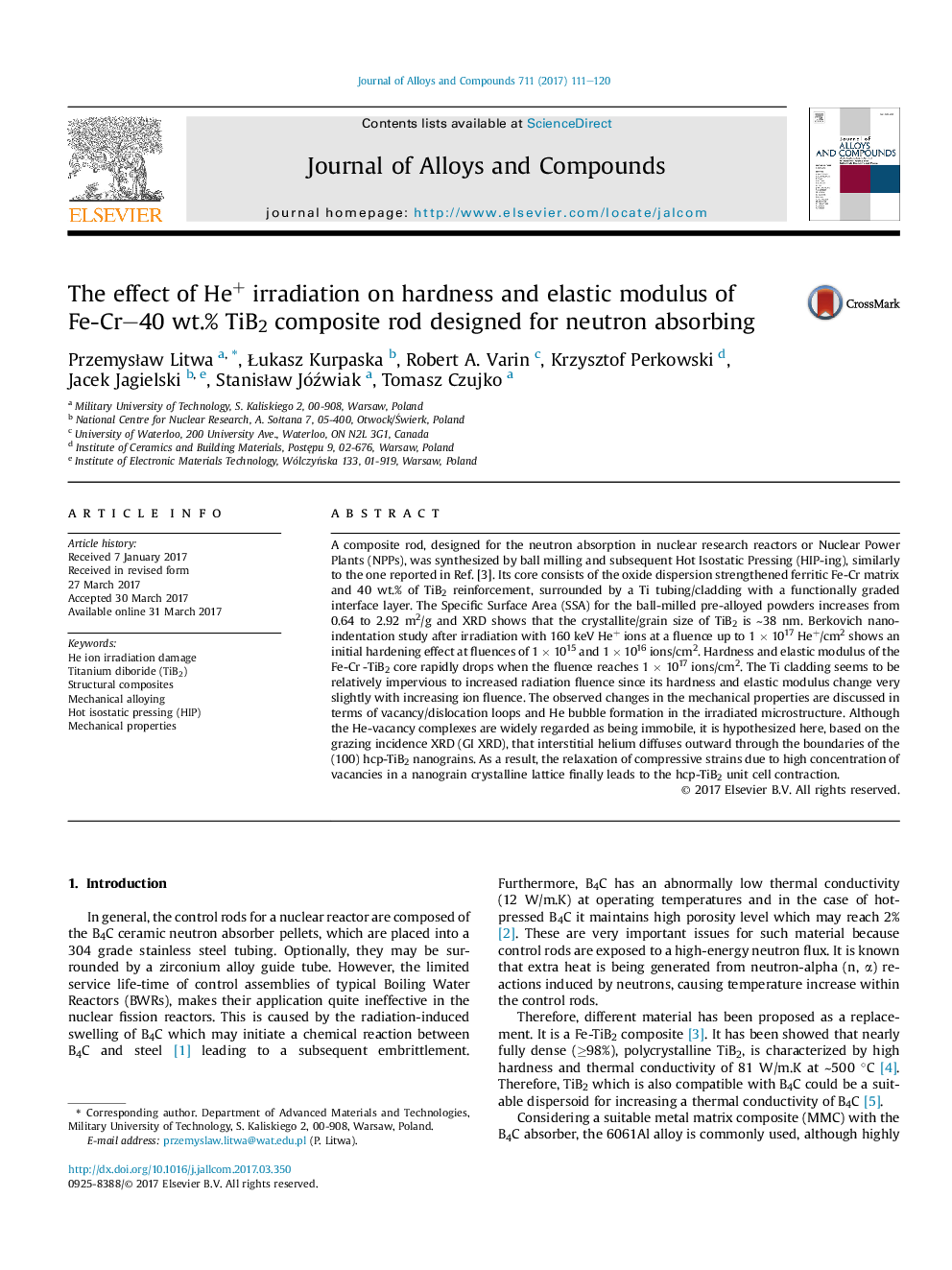| Article ID | Journal | Published Year | Pages | File Type |
|---|---|---|---|---|
| 5459237 | Journal of Alloys and Compounds | 2017 | 10 Pages |
Abstract
A composite rod, designed for the neutron absorption in nuclear research reactors or Nuclear Power Plants (NPPs), was synthesized by ball milling and subsequent Hot Isostatic Pressing (HIP-ing), similarly to the one reported in Ref. [3]. Its core consists of the oxide dispersion strengthened ferritic Fe-Cr matrix and 40 wt.% of TiB2 reinforcement, surrounded by a Ti tubing/cladding with a functionally graded interface layer. The Specific Surface Area (SSA) for the ball-milled pre-alloyed powders increases from 0.64 to 2.92 m2/g and XRD shows that the crystallite/grain size of TiB2 is â¼38 nm. Berkovich nanoindentation study after irradiation with 160 keV He+ ions at a fluence up to 1 Ã 1017 He+/cm2 shows an initial hardening effect at fluences of 1 Ã 1015 and 1 Ã 1016 ions/cm2. Hardness and elastic modulus of the Fe-Cr -TiB2 core rapidly drops when the fluence reaches 1 Ã 1017 ions/cm2. The Ti cladding seems to be relatively impervious to increased radiation fluence since its hardness and elastic modulus change very slightly with increasing ion fluence. The observed changes in the mechanical properties are discussed in terms of vacancy/dislocation loops and He bubble formation in the irradiated microstructure. Although the He-vacancy complexes are widely regarded as being immobile, it is hypothesized here, based on the grazing incidence XRD (GI XRD), that interstitial helium diffuses outward through the boundaries of the (100) hcp-TiB2 nanograins. As a result, the relaxation of compressive strains due to high concentration of vacancies in a nanograin crystalline lattice finally leads to the hcp-TiB2 unit cell contraction.
Keywords
Related Topics
Physical Sciences and Engineering
Materials Science
Metals and Alloys
Authors
PrzemysÅaw Litwa, Åukasz Kurpaska, Robert A. Varin, Krzysztof Perkowski, Jacek Jagielski, StanisÅaw Jóźwiak, Tomasz Czujko,
